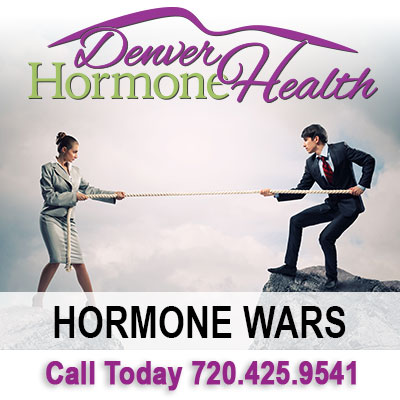UP IN ARMS OVER SEX
 What happens to your love life, as you get older? Let’s separate fact from fiction. There is a demeaning stereotype that elicits a giant “YUCK-EEEWWW” from younger people when the topic of senior sex even comes up. Horny old broads, dirty old men. There is a movie out there now called Dirty Grampa with Robert DiNiro that defines what these kids are thinking. But is it the true portrayal of what’s going on sexually with seniors today? What does that mean? That sex in older adults is taboo? Virility plays a big role in our concept of manhood. There’s this idea you’re supposed to live up to: “Real men are always in the mood.” Forget about it. Major myth. As you reach your 50s, 60s. 70s and beyond you might be tempted to listen to all the negativity and believe your sex life is kaput, once and for all. Baloney. Ninety-three-year-old actress Betty White loves to talk about sex: “I may be a senior, but so what? I’m still hot.”
What happens to your love life, as you get older? Let’s separate fact from fiction. There is a demeaning stereotype that elicits a giant “YUCK-EEEWWW” from younger people when the topic of senior sex even comes up. Horny old broads, dirty old men. There is a movie out there now called Dirty Grampa with Robert DiNiro that defines what these kids are thinking. But is it the true portrayal of what’s going on sexually with seniors today? What does that mean? That sex in older adults is taboo? Virility plays a big role in our concept of manhood. There’s this idea you’re supposed to live up to: “Real men are always in the mood.” Forget about it. Major myth. As you reach your 50s, 60s. 70s and beyond you might be tempted to listen to all the negativity and believe your sex life is kaput, once and for all. Baloney. Ninety-three-year-old actress Betty White loves to talk about sex: “I may be a senior, but so what? I’m still hot.”
WHERE HAS YOUR SEX DRIVE DRIVEN?
Most seniors aren’t aware of all the roadblocks that come with age. They think something is wrong with them and that a lot of it is in their heads. As mentioned above, they are not supposed to want and have a healthy, rewarding sex life. For both men and women, sex starts to become nothing but a memory. The fact is, the majority of issues are physical. No one thing causes low libido.
The most common sexual problems for men are erection difficulty (37%), lack of interest in sex (28%), climaxing too quickly (28%), performance anxiety (27%), and inability to climax (20%).
Men’s changing bodies can tend to cause the entire male sexual response to slow down in a multitude of ways. There is a delay in erection. There is a need for more manual stimulation to achieve an erection. The phase between erection and ejaculation is prolonged. Orgasm is shorter and less forceful. The penis loses its firmness rapidly after ejaculation. The time interval before erection can be achieved again can be quite long. Ilnesses that can affect sexual performance include coronary artery disease, chronic lung disease, arthritis, prostate problems, even stress, depression, sleep apnea, diabetes stroke and medications, all of which also affect women. Anything that is bad for the blood vessels is bad for erections.”
Women’s body changes are mostly due to estrogen decreases that alter the thickness and size of a woman’s reproductive organs. These changes include loss of elasticity and a thinning of the vaginal tissue, decrease in the amount of lubrication, decrease in the size of the clitoral, vulvar and labial tissue and decreases in the size of the cervix, uterus and ovaries. Ouch. Sometimes it can really hurt.
SEX IN THE SIXTIES
Well folks, are you sitting down? In reality there is a lot of action going on between the sheets among those over 60. Data from the University of Chicago’s National Social Life, Health and Aging Project presented in the New England Journal of Medicine revealed that many men and women remain sexually active even in their 70s and 80s. Sexually active Americans aged 57-85 have sex as often as those aged 18-59.
Sex after 60 is healthy. In fact, there really is no validity to statements that suggest sex after 60 is too strenuous and should be avoided due to the risks. A study by the National Commission on Aging (NCOA) showed that women, in particular, find sex over 70 as or more physically satisfying than they did in their 40s. In an interview with Helen Mirren, the Oscar winning actress, announced that sex in her youth was “paranoid and empty.” At the age of 69, she quoted that sex is “great, just wonderful.” A study by the National Commission on aging (NCOA) showed that women, in particular find sex over 70 more physically satisfying than they did in their 40s. So is sex in seniors the newest Fountain of Youth? The fact is, the level of sexual interest and activity among people over the age of 65 is as diverse as the individuals who make up that population. Sex may be different at that age, but it’s not diminished.
REV UP A LOW LIBIDO
Let’s start the whole process with some heavy-duty attitude change and a lot of knowledge. When it comes to aging, we are our own worst enemy. So first, dump the image issue. You’re not in your 20s and you don’t have the body and looks you had then. Wrinkles, baldness, bellies and sagging skin are facts of life as you age. If you let this kill your self-esteem and keep you keeping your clothes on, you’re missing out big time. Get over it, and get on with having a rewarding, fulfilling and ongoing sex life. Consider these facts to get you going:
Sex can cure headaches. One of the health benefits of sex is its ability to act as a pain reliever. The hormone oxytocin (sometimes referred to as the love hormone) is secreted within your body during sex causing endorphins (which are hormone-like chemicals that bear a close resemblance to morphine) to be released. Studies have shown that a rise in oxytocin levels can relive everything from headaches to cramps and overall body aches.
Sex can reduce stress and help you sleep better. One survey revealed that people who have more sex reported that they felt more at ease, happier and learned how to handle stress better. People who enjoy a regular dose of sex convey that they sleep much better during the night and feel alive and refreshed throughout the day. So, one of the health benefits of sex is a better nights sleep, which allows you to handle day-to-day stress much more efficiently.
Sex can increase blood flow. It goes without saying that when we get aroused our blood starts to pump at a quicker rate and, thus, blood flow to our brain increases What this ultimately means is that the fresh supply of blood pumping through your body provides the organs with a healthy dose of oxygen and rids the body of old and wasteful products.
Here’s a fun one: believe it or not, sexual intercourse burns off 150 calories every half hour. Although the average couple engages in sex for approximately 25 minutes a session only three times a week, it still accounts for 450 calories that are better taken off than put on. A health benefit of sex, particularly a rigorous hour of sex, is that it may burn even more than 300 calories depending on how rigorous you get. I wouldn’t suggest getting a fitbit for it yet…
Although the orgasm is sometimes referred to as the “little death,” having at least two orgasms a week can increase your life span. Every time you reach orgasm, the hormone DHEA (Dehydroepiandrosterone) increases in response to sexual excitement and ejaculation. DHEA can boost your immune system, repair tissue, improve cognition, keep skin healthy, and even work as an antidepressant. Therefore, a health benefit of sex if you keep the orgasms coming, is potentially a longer life.
DON’T BE SHY
Be willing to be flexible and adapt to change. Forget staring in the mirror all the time. Don’t be afraid to slow the process down. Realize that sexual arousal takes longer and requires more manual stimulation. Make the most of foreplay. Communicate. Share what makes you feel good with your partner. Don’t think discussing any physical problems will turn your partner off. Experiment. Lighting, candles, oils. Try a new place. Different positions. And women…make adequate lubrication part of your routine to avoid irritation of the vagina or painful intercourse. In all this, we’re referring to couples. But don’t avoid pleasuring yourself. Forget the “shouldn’ts, couldn’ts.” Masturbation is part of any healthy sex life. As people age, it is often more difficult to find a partner. Make yourself feel good. You certainly deserve it.
IT’S TIME FOR A CEASE FIRE
Hormone imbalances don’t just occur as part of the aging process, although it is often the case. But that doesn’t mean you should give up on living a robust and yes, sexual life. There is a way to address many of the issues you’re struggling with. Some, of course, are due to physical problems. But others could be the result of hormone imbalances, and the key to getting what you want. Bioidentical hormone replacement therapy is a good way to start. Bioidentical hormones are hormones derived from natural sources, and have an exact structural match to the hormones produced by the human body. This “bioidentical” structure allows these hormones to follow the same pathways and act on the same receptors in the body as your own hormones.
Where can you find out if BHRT can help you?
WITH STEPHEN A. GOLDSTEIN, M.D, F.A.C.S. AT DENVER HORMONE HEALTH, ONCE YOU’RE THERE, YOU’VE GOT HIS FULL ATTENTION. FEW HAVE THE KNOWLEDGE AND EXPERIENCE IN THE FIELD OF BHRT AS HE DOES. YOU CAN DISCUSS ANYTHING WITH HIM. WANT TO KNOW MORE ABOUT WHAT BHRT IS? HE’LL EXPLAIN IN DETAIL. HE’LL LAY OUT THE MANY WAYS BHRT COULD HELP YOU, AND GIVE YOU OPTIONS AS HOW TO PROCEED. COMPREHENSIVE TESTING AND EVALUATION WILL LET HIM ASSESS ANY ISSUES WITH YOUR HORMONE LEVELS AND WHAT HE CAN DO TO RESTORE IMBALANCES THAT ARE DETERRING YOU FROM LIVING THE LIFE YOU WANT, NO MATTER YOUR AGE. FROM THERE HE CREATES INTEGRATED AND INDIVIDUALIZED TREATMENT PROGRAMS THAT COMBINE USING BHRT WITH PROPER NUTRITION AND EXERCISE.
CALL NOW TO MAKE AN APPOINTMENT FOR A CONSULTATION. IT’S AMAZING HOW GOOD YOU’LL FEEL.
